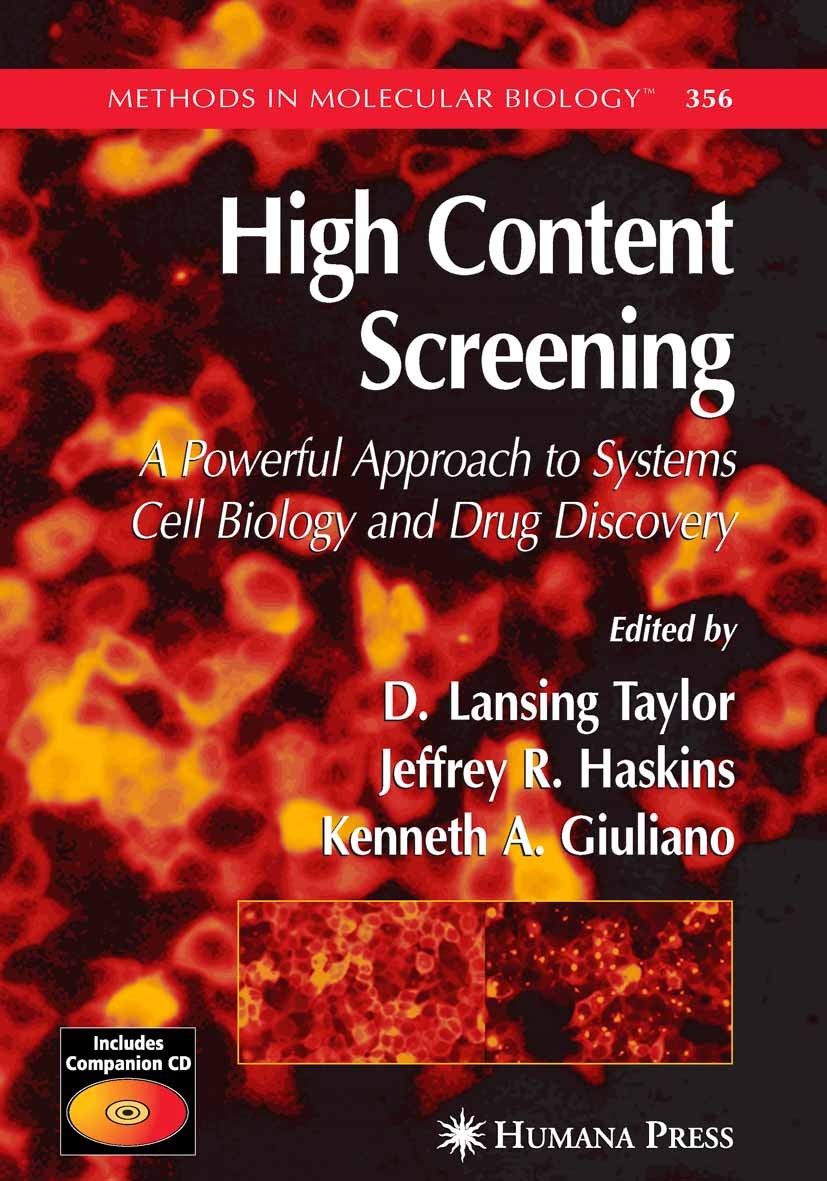| 书目名称 | High Content Screening | | 编辑 | D. Lansing Taylor,Jeffrey R. Haskins,Kenneth A. Gi | | 视频video | http://file.papertrans.cn/427/426204/426204.mp4 | | 概述 | Includes supplementary material: | | 丛书名称 | Methods in Molecular Biology | | 图书封面 |  | | 描述 | There has always been some tension between proponents of hypothesis-driven and discovery-driven research in the broad field of life sciences. Academic research has been primarily focused on hypothesis-driven research. However, the success of the human genome project, a discovery-driven research approach, has opened the door to adding other types of discovery-driven research to a continuum of research approaches. In contrast, drug discovery research in the pharmaceutical industry has embraced discovery-driven research for many years. A good example has been the discovery of active compounds from large chemical libraries, through screening campaigns. The success of the human genome project has also demonstrated the need for both academic researchers and industrial researchers to now understand the functions of genes and gene products. The cell is the basic unit of life and it has been at the cellular level where function can be demonstrated most cost-effectively and rapidly. High content screening (HCS) was developed by Cellomics Inc. in the mid-1990s to address the need for a platform that could be used in the discovery-driven research and development required to understand the func | | 出版日期 | Book 2006 | | 关键词 | bioinformatics; biology; cell biology; cell lines; genes; proteins; siRNA | | 版次 | 1 | | doi | https://doi.org/10.1385/1597452173 | | isbn_softcover | 978-1-61737-746-4 | | isbn_ebook | 978-1-59745-217-5Series ISSN 1064-3745 Series E-ISSN 1940-6029 | | issn_series | 1064-3745 | | copyright | Humana Press 2006 |
The information of publication is updating

|
|
 |Archiver|手机版|小黑屋|
派博传思国际
( 京公网安备110108008328)
GMT+8, 2026-1-2 18:30
|Archiver|手机版|小黑屋|
派博传思国际
( 京公网安备110108008328)
GMT+8, 2026-1-2 18:30


